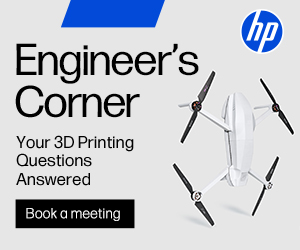$90,000 Awarded to Developers of 3D Printed Retinal Model
The competition was part of the 3-D Retina Organoid Challenge, which was launched by the National Institutes of Health (NIH) in an attempt to find a model that could help physicians understand and treat diseases of the retina. A few days ago, the NEI announced the winning team.
“The diversity of disciplines within each team is impressive and their concept proposals showcase the creativity that occurs when vision researchers collaborate with experts from other fields,” said NEI Director Paul A. Sieving, M.D., Ph.D. “We intend for these concepts to push the development of retinal organoids. If developed, these next-generation human retina models would be invaluable resources for researchers in academia and industry.”
The winning team, which was awarded $90,000, was led by Erin Lavik, ScD, from the University of Maryland. The team’s proposal involves 3D printing layers of adult neural progenitor-derived retinal neurons that parallel the human retina structure, using a type of screenprinting. The 3D bioprinted retinal models were designed to allow researchers to study and find new ways to prevent the development of eye conditions such as age-related macular degeneration, glaucoma, and diabetic retinopathy – as well as to enable better pharmaceutical testing.
The award for the 3-D Retina Organoid Challenge (3-D ROC) is part of the first phase of the NEI’s plan to get a proposal developed. The second phase will be launching later this year, with $1 million set to go to teams that develop prototypes.
According to the winning proposal, the technology developed is a form of screen printing that doesn’t rely on UV light and avoids issues like shearing.“During [the second] part [of 3-D ROC] we’re going to actually be asking people to develop their prototypes and that should last for about 2 to 3 years,” said Jessica Mazerik, Health Science Administrator with the NEI. “We want something very functional that recapitulates the structure and morphology, and eventually, hopefully, it can be commercialized and broadly used by the research community and companies. We want something that can be used a little bit more broadly and then that can also be picked up by pharmaceutical companies and used for drug screening drug validation and toxicology screening, and hopefully, modeling diseases.”
“It is simple, reproducible, and highly scalable, making it suitable for high throughput assays. We have shown that we can print both a range of gels and cells in complex patterns with high resolution and reproducibility,” the proposal states. “This allows us to recapitulate the layers of the retina and to provide the matrix cues to promote the critical polarization of the cells types and promote the formation of appropriate synapses in the system, and enhanced survival of target neurons.”
Five honorable mentions were also awarded:
- Northeastern University, led by Rebecca Carrier, PhD
- University of Wisconsin – Madison, led by David Game, MD, PhD
- Albert Einstein College of Medicine, led by Wei Liu, PhD
- University of Miami, led by Daniel Pelaez, PhD
- Fraunhofer Institute for Interfacial Engineering and Biotechnology, led by Katja Schenke-Layland, PhD
You can read the winning proposal here.
Discuss this and other 3D printing topics at 3DPrintBoard.com, or share your thoughts below.
[Source: MD Magazine]
Subscribe to Our Email Newsletter
Stay up-to-date on all the latest news from the 3D printing industry and receive information and offers from third party vendors.
Print Services
Upload your 3D Models and get them printed quickly and efficiently.
You May Also Like
Billion Dollar Bambu and a New Worldview?
Imagine for a moment that Bambu Lab sells 2.7 million 3D printers this year. If their average ticket price is $350 and they generate $75 million in filament sales, their...
Iradion’s Role in 3D Printing’s Laser Revolution
Additive manufacturing (AM) thrives on precision and reliability, especially as it moves from prototyping to full-scale production. Iradion Laser Inc., a Massachusetts-based company, is stepping into the 3D printing industry...
MX – Machining Transformation: Revolutionizing Manufacturing with Additive Technologies
The machining industry is experiencing a profound transformation, propelled by four key trends: Process Integration, Automation, Digital Transformation (DX), and Green Transformation (GX). Central to this evolution are Additive Manufacturing...
3D Systems Sells Geomagic Software Division to Hexagon AB
Additive manufacturing (AM) stalwart 3D Systems (NYSE: DDD) has announced the sale of its Geomagic assets to Swedish software giant Hexagon AB for $123 million. The deal includes Design X,...
































